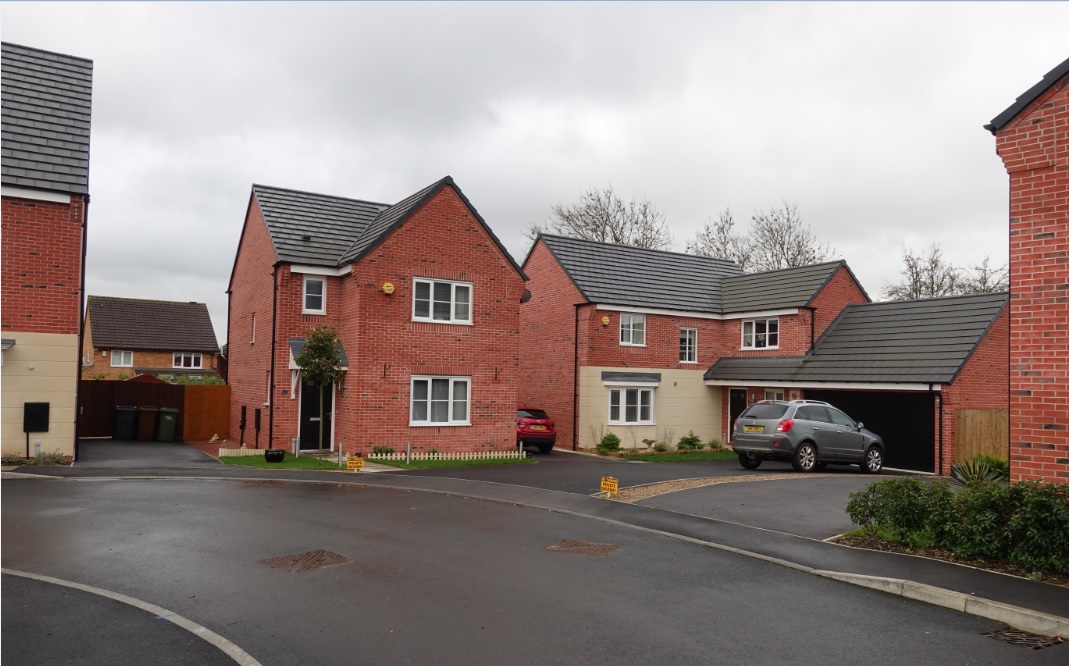
Bad design? Housing development in Melton Mowbray by Persimmon
Guest blog: Matthew Carmona and Lucy Natarajan
Here at The Bartlett, UCL we recently completed a major study of the eleven years of publically funded CABE, the Commission for Architecture and the Built Environment. We evaluated the work, history, and impact of the organisation, and the ‘tools’ it used to promote good urban design across England. When it came to housing design CABE had real impact and, as we argue here, the leadership it provided is sorely missed. But there are ways that planners, urban designers and the government can draw on the CABE Experiment, which will be increasingly important in light of the intended increase in the volumes of housing being built.
CABE was never well understood. External perceptions were often of a monolith swallowing up huge dollops of tax-payers’ money to conduct design review. As we reported in our book Design Governance: The CABE Experiment, the organisation was tiny by government quango standards, and only around a fifth of its staff were dedicated to design review. The rest of the staff worked on lower profile but typically highly regarded and effective activities such as: enabling within local authorities; its research projects; the work of its public spaces and parks arm (CABE Space); production of its very well used guidance and website; and various educational enterprises such as its summer schools.
These ‘informal tools’ of CABE were not mandatory or statutory and instead influenced and guided the professions. Yet they created a culture that improved design, for housing as for many other aspects of place. The work of CABE even reached some, although not all, of the volume house builders. Such progress will easily ebb away without continued efforts and leadership.
But how did improvement happen?
The answer is relatively simple: CABE’s tools were flexible and the activity was coordinated across the country, with the voice of government behind them. CABE addressed the issue of housing design from different angles, with:
- national housing audits to embarrass the housebuilders with a stark national picture of the generally poor standards of their products
- case studies and guidance to demonstrate principles and help raise aspirations
- training for local authority staff
- ‘enablers’ within local planning authorities working directly with councils, assisting with policy frameworks and large-scale applications
- hundreds of design reviews were conducted on residential-led masterplans around the country
In addition, the Building for Life consortium helped establish nationally acceptable standards and an awards system for the best housing designs. And last but by no means least, government strengthened national policy, including on highways design in residential areas.
So where are we now?
Since CABE’s demise we have seen a large scale withdrawal of government, at national and local levels from engaging in design, and a fragmentation of the non-governmental design governance services that remain. We have also seen a retrenchment of house builders, highways authorities, and planning authorities across the country back to the old ways of doing things. Respectively, these are based on standard (and inappropriate) housing types, rigid and over-engineered highways standards, and planning authorities without the time, skills or confidence to challenge the house builders.
This is not to imply that nothing is happening. The Place Alliance provides a forum for ‘grassroots’ exchange and, bubbling up from these connections, UDL initiated and lead the work to produce a collaborative and comprehensive guide: The Design Companion Planning & Placemaking. This publication demystifies the principles behind ‘good places’ and explains with detailed examples how planners and placemakers can deliver the highest standards in urban design. In addition the largest metropolises particularly benefit from local leadership, particularly the Mayoral SPG for new build in London and Manchester’s City Council’s guide. However without the national coordination of such initiatives, housebuilders can and surely will cherry pick where they build quality homes.
But learning the lessons from the CABE era…
What should the government do now?
- Show leadership: Minsters should speak out when residential design is poor and celebrate it when it is not, and appeal decisions where residential schemes were rejected on design grounds can provide rich illustrations for that work.
- Support proactivity in local authorities: LAs can move away from reliance on generic policies in local plans and prepare simple non-statutory site-specific frameworks and design codes for housing sites.
- Promote design review: This constructive peer-based checking and refinement mechanism should be made compulsory in the forthcoming revised National Planning Policy Framework (NPPF) for all major housing schemes.
Speaking up for better places and better homes will help those who are working on the ground, and as Design Governance: The CABE Experiment shows, this can have a great effect. With little cost and no new legislation we can once again drive design quality up the national agenda.
References
Carmona M, De Magalhães C, Natarajan L, (2017) Design Governance: The CABE Experiment. London: Routledge
UDL (2017) The Design Companion Planning & Placemaking. London: RIBA.
The Place Alliance were winners of the Sir Peter Hall Award for Wider Engagement in 2016’s RTPI Awards for Research Excellence. This award was sponsored by the Idox Information Service.
Share
Related Posts
Supporting residents on the decarbonisation journey: leveraging data for effective retrofit projects
As the drive towards decarbonisation intensifies, the social housing sector’s ability to collect, store and manage vast amounts of data becomes increasingly critical. With a shared goal of creating warmer, carbon-free homes, housing associations’ strategic use of data is essential ....
The recent spikes in energy costs have thrown into sharp focus the challenge of heating our homes. Domestic heating is important, not just for our comfort and wellbeing, but to reduce humidity and prevent condensation. But because traditional heating systems ....


